A Pilgrimage Celebrating the 1,700th Anniversary of the Nicene Creed
Turkey
May 29 – June 11, 2025
Especially designed for
The Living Church
Space is limited. Register Today!
Use group code 25024 to register for the pilgrimage online.
For instructions on how to register, click here.
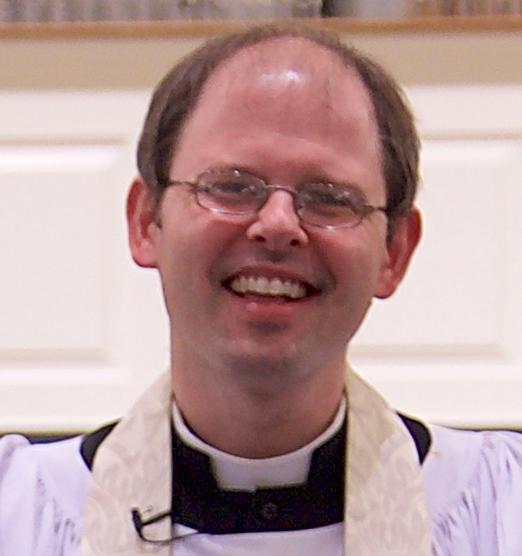
Rev. Mark Michael
Pilgrimage Host

Dr. Garwood Anderson
Pilgrimage Host
As Christians across the world celebrate the 1,700th anniversary of the Council of Nicaea, join Mark Michael of THE LIVING CHURCH and Garwood Anderson of Nashotah House as we retrace the steps of St. Paul’s ministry and explore the life of the undivided Church that gave us the creeds.
During this two-week trip across Turkey, sometimes called “the second Holy Land,” we will discover majestic ancient ruins and Byzantium’s greatest artistic treasures, worship together daily, feast on local delicacies, and learn from the resilient and faithful believers of contemporary Turkey.
The significance of ancient Anatolia — now Turkey — in the birth of our faith is hard to overestimate. Over 60 percent of the places mentioned in the Bible are located there, as were the sites of all seven of the Ecumenical Councils. For a thousand years, Constantinople (now Istanbul) was the world’s greatest Christian city, a center of scholarship, devotion, and art. Turkey is also a center of Islamic culture, and a home of grand mosques and Sufi spirituality. A safe and modern country, it hosts millions of tourists from across the world each year.
Our approach will be both historical and spiritual. Assisted by excellent local guides, we will trace the stories of these sites and hear biblical texts in the places they address. We will celebrate the Eucharist together in ancient churches and have time for discussion and reflection. There will be fun moments as well: shopping in Istanbul’s grand bazaar, enjoying the hot springs at Pamukkale, learning about Turkish coffee and carpets, maybe even a hot-air balloon trip over the moonscape of Cappadocia.
Pilgrimage enriches your understanding of the Bible and deepens your connections to the Church’s witness across the ages. You make new friends and encounter God in new and exciting ways. Don’t miss this chance to explore the Cradle of the Church.
Garwood Anderson is Professor of New Testament at Nashotah House and former dean and president. Garwood’s research and writing focuses on St. Paul’s life and thought. This will be the fifth trip to Turkey for Mark Michael, editor of THE LIVING CHURCH. Mark has a lifelong fascination with the Byzantine Empire and is a budding student of Turkish. Allison Zbicz Michael is a historical theologian, with a deep interest in the early Church’s creeds and councils.
Itinerary
12 nights / 14 days
Day 1: Thursday, May 29, 2025: Departure from the USA
Departure from Washington, DC on a scheduled airline departure flight. The destination is Istanbul, Turkey.
Day 2: Friday, May 30: Istanbul
We arrive mid-morning in Istanbul, greet our full-time Tour Manager, and transit to our hotel. Founded in 330 as Constantinople, the first great Christian city, Istanbul straddles Europe and Asia, and is filled with architectural monuments and 450 mosques. With a population of over 15 million, it is Europe’s largest city and a center of world culture. Unpack for our four-night stay and enjoy some rest or explore the local neighborhood. We share a festive early dinner, with time to connect and talk about the sites we will explore together.
Day 3: Saturday, May 31: Istanbul
After a hearty breakfast, we transit to the heart of the ancient city for a full-day tour. We begin with the Hippodrome, scene of frenetic chariot races; the evocative fifth-century Basilica Cistern; and the Blue Mosque, named for its delicate ceramic tiles. We explore the Hagia Sophia, the symbol of the Byzantine Emperor and the world’s largest church for a thousand years, standing beneath its dramatic domes and viewing a series of stunning mosaics in the galleries. We continue to the Archeological Museum, with its world-renowned collection of ancient statuary, including the legendary tomb of Alexander the Great. We finish the day with a tour of Topkapi Palace, home of the Ottoman sultans. The site is full of elegant pavilions and treasure chambers, and includes the Church of Hagia Irene, the city’s oldest church and site of the Second Ecumenical Council in 381. We return to our hotel for dinner.
Day 4: Sunday, June 1: Istanbul
We begin with a tour of the region around Taksim Square, the heart of cosmopolitan Istanbul. Associated with foreign trade for millennia, the district is filled with elegant 18th- and 19th-century homes, exclusive shops, embassies, and most of the city’s churches. We join the congregation at the Crimean Memorial Church, Istanbul’s Anglican parish, for Mass, and then learn more about its rich history and unique witness. After lunch, we travel by ferry across the Bosphorus to Kadikoy (ancient Chalcedon), a charming neighborhood famous for its fish markets. We visit the Church of St. Euphemia, a third-century martyr. The Fourth Ecumenical Council, which proclaimed Christ as one person in two natures, was held here in 1453. We cross back to the old city for a visit to the 17th-century Spice Market, whose 85 shops specialize in aromatic spices from across the world, dried fruits, and Turkish delight.
Day 5: Monday, June 2: Istanbul
We begin with a cruise up the Bosphorus, the strait that divides Europe and Asia, and provides the passageway from the Black Sea to the Mediterranean. Enjoy views of Ottoman palaces, the dramatic city skyline, and a series of historic bridges. We visit the Chora Church, an 11th-century church with remarkably preserved late Byzantine mosaics and frescoes that tell the infancy story of the Blessed Virgin Mary and the ministry of Jesus. We continue to the massive fourth-century Theodosian Walls, a marvel of ancient military construction that helped the city withstand numerous sieges. Then it’s on to the Ecumenical Patriarchate, seat of Bartholomew I, spiritual leader of the Orthodox world. The Patriarchal Church of St. George contains many holy relics and icons brought from former churches across the city. We will learn more about the patriarch’s ministry and the plight of Christians in modern Turkey, and share in the daily Vespers service. We round off our time in Istanbul with a visit to the medieval Grand Bazaar, the world’s largest covered market, with 4,000 shops. Browse the famed Turkish textiles, jewelry, and antiques, look for a bargain in the clothing stalls, and enjoy a cup of Turkish coffee or tea and a baklava at the legendary Sark Kavehsi coffeehouse.
Day 6: Tuesday, June 3: Nicaea, Pergamum
After breakfast, we depart our hotel and drive to Iznik (ancient Nicaea), a walled city that hosted the First Ecumenical Council in 325, which gave us the Nicene Creed. We will visit the lakeside ruins of Constantine’s Palace, where the council was held, as well as the Church of Hagia Sophia, where the seventh Ecumenical Council gathered in 787. Remnants of frescoes and mosaics survive in the former church, which was converted into a mosque in 2011. We continue to Bergama (ancient Pergamum), one of the ancient world’s largest cities, visited by St. Paul and one of the Seven Churches of Revelation. We will visit the Acropolis, which contains the ruins of the famed Temples of Zeus and Athena, as well as a Library that once contained 200,000 volumes, all written on the parchment invented here in the second century B.C. We transit to our nearby hotel for dinner and a one-night stay.
Day 7: Wednesday, June 4: Izmir, Didyma, Kusadasi
We travel south to Izmir (ancient Smyrna), a great port city in antiquity (Homer was a native). St. Paul founded the church there, which is also among the seven addressed by Christ in the Book of Revelation. The record of the martyrdom of an early bishop, St. Polycarp, is among the earliest complete saints’ lives. We will visit the ancient Agora, or marketplace, and meet with fellow Anglicans at St. John the Evangelist Church, whose ministry dates from 1626. We continue to Miletus, where St. Paul preached a message of encouragement to the Ephesian elders and later founded a church. Highlights include the Baths of Faustina and the Theatre, which was already 400 years old in St. Paul’s day. We push on to nearby Didyma to visit the massive Temple of Apollo, one of only two in the ancient world with its own oracle. We transit to our hotel in the beach resort town of Kuşadası for dinner and a two-night stay.
Day 8: Thursday, June 5: Ephesus
It’s a short trip from our hotel to the ruins of Ephesus, one of the Mediterranean world’s best-preserved archaeological sites. St. Paul visited the city twice and based his ministry there for two years. His Epistle to the Ephesians is addressed to the struggling church that thrived in the shadow of the great Temple of Artemis, one of the Seven Wonders of the World. Later, St. John the Evangelist came here with the Blessed Virgin Mary, and according to legend, he is buried in the nearby hills. We will spend the morning in the ancient ruins, whose highlights include the Library of Celsus, the Temple of Hadrian, the Odeon, and the single remaining column of the Temple of Artemis. After lunch, we visit the Archaeological Museum, full of striking statues discovered in recent centuries. We continue to the ruins of the Basilica of St. John, the great church built around the apostle’s tomb by Justinian in the sixth century, as well as the House of the Virgin Mary, where our Lord’s mother spent her final years. If time permits, we will visit the nearby Grotto of the Seven Sleepers, site of an early Christian legend about seven young men who awoke after a 200-year nap. We return to our hotel for dinner and, perhaps, a dip in the Mediterranean Sea.
Day 9: Friday, June 6: Kusadasi, Philadelphia
We leave the coast after breakfast to head for the interior, first visiting Sardis, famous for its wealth and decadence (coinage was invented by its fabled king, Croesus). St. Paul visited Sardis, and it is among the seven churches addressed by Jesus in Revelation, with a word of warning. A well-preserved Synagogue attests to the prominence of its Jewish community. Other highlights include a large Gymnasium and the Temple of Artemis. We push on to nearby Philadelphia, another of the seven churches. The ruins of the impressive Byzantine Church of St. John are all that remain of a cosmopolitan center once known as “little Athens.” Our final destination is Aphrodisias, a small city dedicated to the goddess of love and famous for its sculptors. Despite earthquake damage, the ruins are remarkably well-preserved, and include the Temple of Aphrodite, later a church; the Odeon or council house, the Sebasteion, and an outstanding Stadium. We continue to our hotel in Pamukkale for dinner and a two-night stay.
Day 10: Saturday, June 7: Pamukkale, Hierapolis, Laodicea
After breakfast, we explore Pamukkale’s calcium-rich hot springs, which spill over a series of terraces creating dramatic “cotton castles.” We continue to Hierapolis, the home of St. Paul’s companion Epaphras. The city was evangelized by St. Philip the Apostle, whose Martyrion, or martyr shrine, has been recently restored. We will worship together there. Large portions of the ancient and Byzantine cities survive, including a fine Roman Theater, several Nymphaea, or fountains, a Temple of Apollo, and an extensive Necropolis, or city of the dead. We will make a quick stop at nearby Laodicea, whose struggling ancient congregation was also among the seven churches of Revelation. Highlights are its Aqueduct and Nymphaeum, which transmitted its infamous water supply, which was “neither hot nor cold.” We return to our hotel for dinner.
Day 11: Sunday, June 8: Antioch, Konya
We depart early for a scenic tour of the Turkish countryside, heading first for Antioch of Pisidia. In St. Paul’s time, the city had been recently refounded as a Roman colony and was among the largest in Galatia. The Book of Acts preserves a sermon he preached in the synagogue here, now the Byzantine St. Paul’s Church, where we will celebrate the Sunday Eucharist. Other highlights of the city include its Temple of Augustus and the Triumphal Arch. We continue to Konya (ancient Iconium), a city visited by Paul three times, which is best known today for its majestic medieval mosques and the Mevlevi Order, disciples of a famous Sufi master known for their whirling dances during meditation. If time permits, we will visit the fine Archaeological Museum and the Mevlana Museum, the burial place of several Sufi mystics, including the poet Rumi. We check into our hotel for dinner and a one-night stay.
Day 12: Monday, June 9: Cappadocia
We depart after breakfast for a drive into Cappadocia, a region famous for its dramatic landscape and spiritual fervor. Jewish Cappadocians were present in Jerusalem on the Day of Pentecost, and large numbers of Christians fled there to escape persecution in the third century. St. Basil, the Bishop of Caesarea, its capital, founded a series of monasteries and the first hospital there a century later. Volcanic eruptions and wind erosion created dramatic rock formations called fairy chimneys across the region, and Byzantine monks carved hundreds of chapels out of the soft local stone, decorating them with striking frescoes. We will travel through several valleys that abound in these unusual rock features, the Devrent and Pasabag Valleys, and then will explore the many frescoed chapels of the Goreme Open Air Museum. We continue to Zelve, which features an extensive monastery and numerous cave dwellings, some of which were inhabited until the 1950s. The day’s final destination is Uchisar Castle, a huge rock cone with dozens of houses carved into its sides. The view of the landscape from here is spectacular. We head for our hotel for dinner and a two-night stay.
Day 13: Tuesday, June 10: Cappadocia
We begin the day before dawn with an optional ascent over Goreme in a hot-air balloon (cost additional). After breakfast, we will head for Kaymakli Underground City, a vast complex of dwellings, storehouses, and churches that burrows eight levels into the rock. It’s one of dozens of similar cities across the region. We will hike and explore cave churches in Pigeon Valley and Gulludere Valley, and close our time together with worship in the fifth-century Church of St. John the Baptist in Cavusin. We return to the hotel for an early dinner, and those who aren’t too tired can venture out to Red Valley for a spectacular sunset view over the sandstone rocks.
Day 14: Wednesday, June 11: Return Home
We depart early for transit to Kayseri Airport and a quick flight to Istanbul. We then transit within the airport to catch our return flight to Washington, DC.

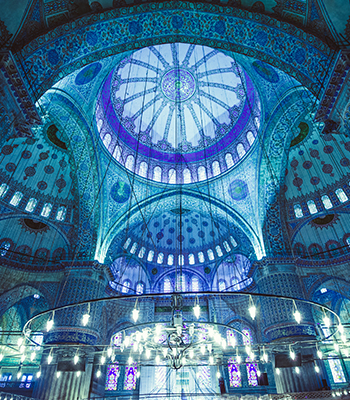
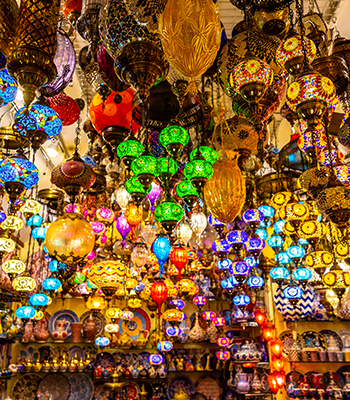
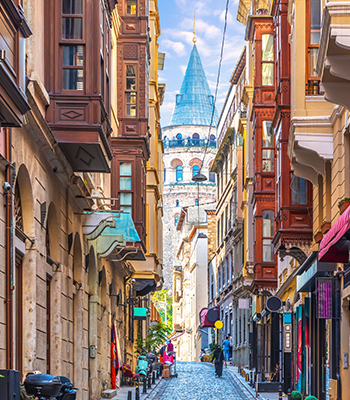

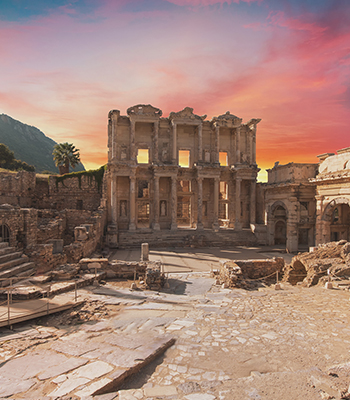
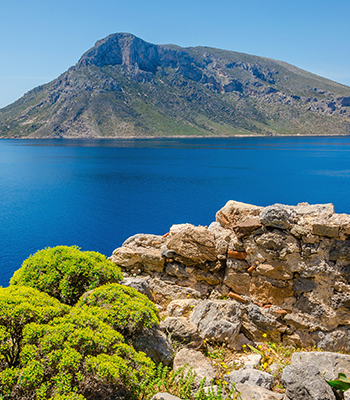
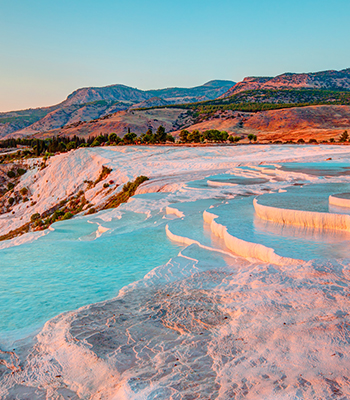
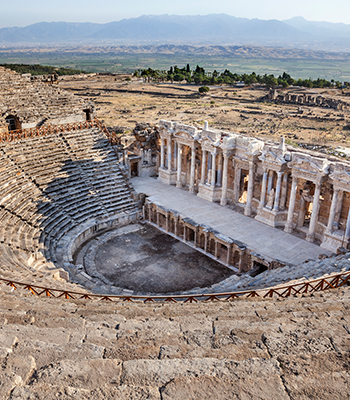

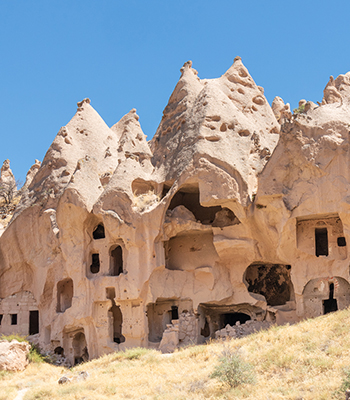
Cradle of the Church Pilgrimage to Turkey
Pilgrimage Cost
With Airfare
from Washington, DC- Single Supplement (private room) – $814 additional
Land Only
Book your own airfare- Single Supplement (private room) – $814 additional